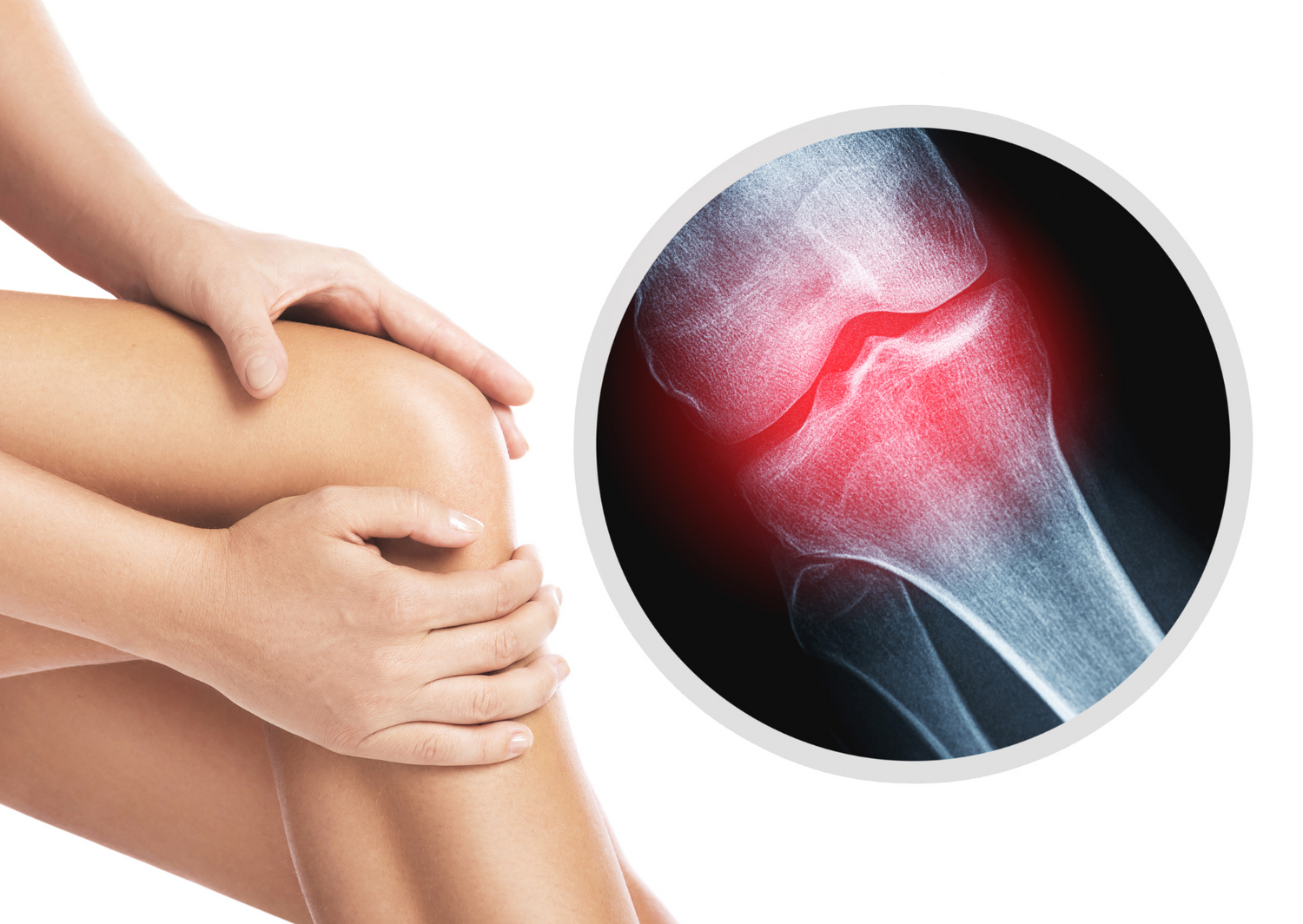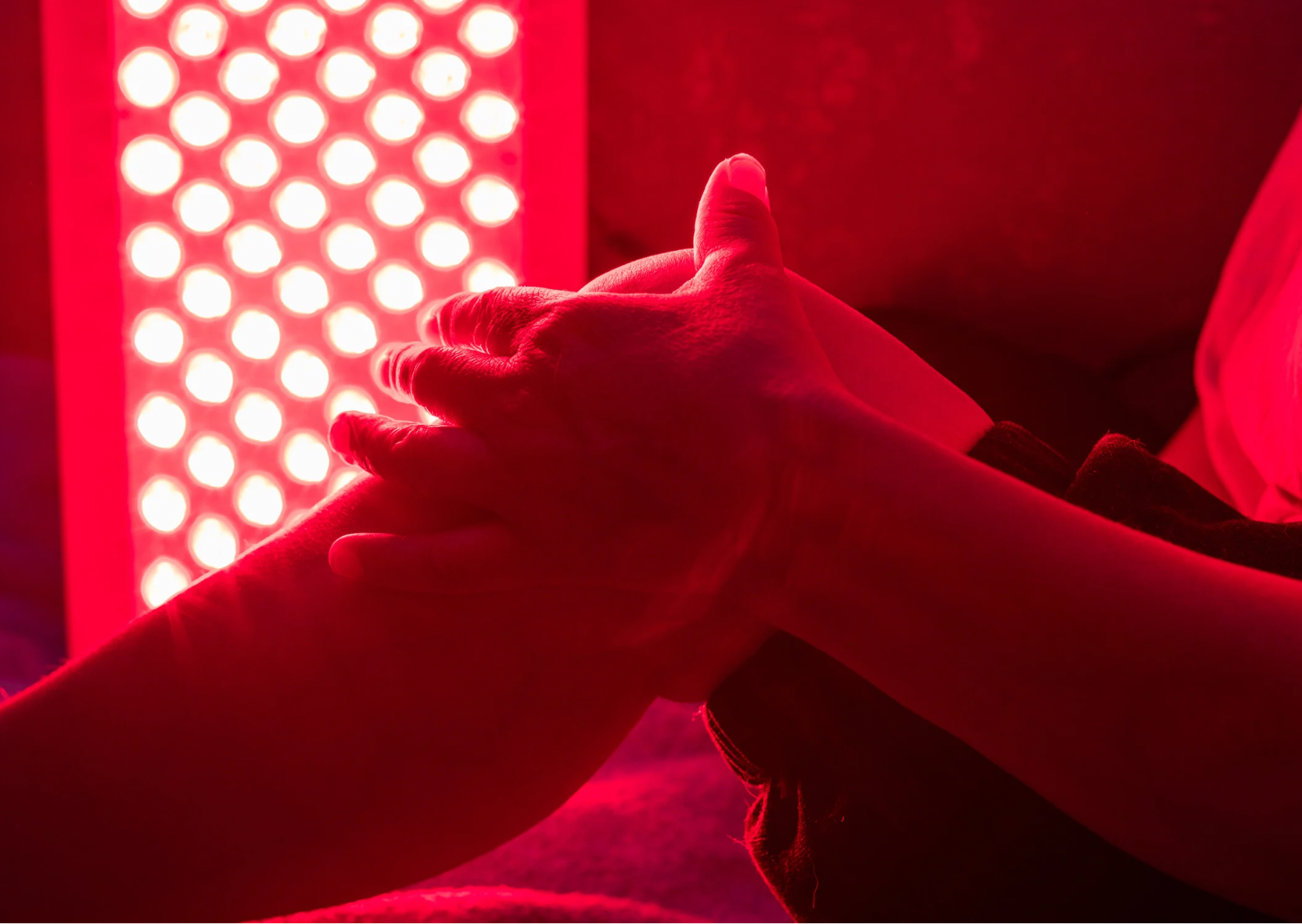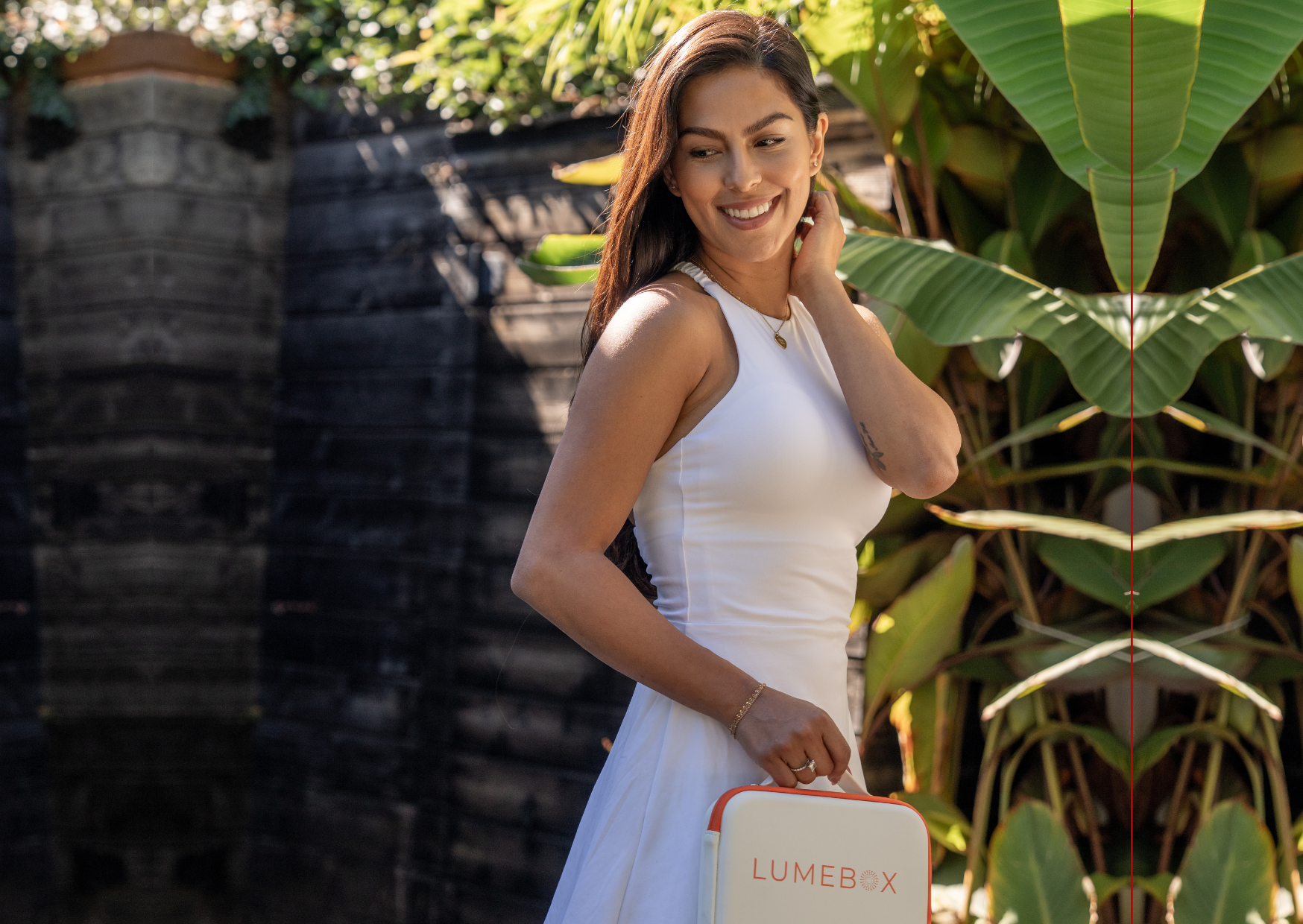When my mom - who’s had her fair share of broken ribs over the past few years - questioned if there was more she could do for her bone strength (beyond her exercise routine and reasonably balanced diet), I knew it was a question worth exploring for many of us.
So, if you’ve been wondering the same thing or the concern of your bone becoming more brittle has crossed your mind, you’ve come to the right place!
We’ve got the science to share, and the tools to get you started… right at a time when it's more pressing than ever to prevent bone damage (read on to learn why).
The Development of Osteoporosis
Osteoporosis causes bones to become weak and brittle due to a decrease in bone mass and bone mineral density.
It is a bigger silent killer than many realize - a lot of people don't know they have it until a fracture or two occurs.

While certain groups are more predisposed to Osteoporosis than others (for example, shorter or more petite individuals, women [1], those with lower BMI, those who have it in their family history, smokers, and post-menopausal women), there are some warning signs:
- Loss of height over time.
- Stooped posture or compression fractures - severe back pain to follow! Bending and twisting will make these symptoms worse.
- Cramping or aching.
- Bone pain.
- Bones that break more easily than expected.
As osteoporosis causes bones to become more fragile, fractures may occur as a result of minor falls or normal stresses such as lifting a heavy object, or even coughing.
The Bone Health & Osteoporosis Foundation recommends that you get your bone mineral density checked by a doctor (using a DEXA scan to measure the porousness of your bones) as early as the age of 50. Medicare generally covers DEXA scans every other year for women over the age of 65 and men over the age of 70. As symptoms worsen, quality of life can be heavily impacted, so it’s important to get on top of bone health ASAP, and if you have risk factors - speak to your doctor to see if you should get one earlier.
Beneath the Surface: The Reasons Our Bones Weaken
From the genes we inherit to the air we breathe, our bones might not be as strong as they could be for many reasons. While some of these factors are within our power to change, others are beyond our control.
Take a look at the list below, and you'll likely spot which ones are within our grasp:
1. Age
Each year, our bone mass and density naturally decrease. After peaking in our late 20s and 30s, bone loss outpaces new growth [2]. Coupled with the loss of estrogen through menopause (as estrogen plays a crucial role in bone remodeling), it's easy to wish you were 21 again. However, there is a light in the distance!
2. Nutrients
The jury is still out on whether “milk really does the bones good”; the data on whether milk consumption leads to lower fracture risk is conflicting [3].
But the truth is, calcium, along with other minerals like magnesium, ARE important for bone health. Lower bone density has been linked to insufficient calcium and vitamin D [4] (the nutrient that helps the body absorb calcium).
We also need many other essential nutrients to build strong bones, tendons, and tissues, including adequate protein to build collagen and more. Sodium intake should be in moderation since a high sodium diet is linked to increased calcium loss in the kidneys [5]. But, if you read the studies closely, you’ll see that while diet is incredibly important, it is not the be-all and end-all when it comes to maintaining bone mineral density [6]...
3. Lifestyle
Things to avoid:- High alcohol consumption
- Smoking
- High caffeine intake
These can interfere with calcium balance and vitamin D production in the body and affect bone health [7, 8].
Things to incorporate:
- Physical activity is also crucial when it comes to maintaining our bone health - and has potentially more impact than you realize!
- Weight-Bearing Aerobic Exercises: The key is to engage in activities that create enough force on the bones to stimulate growth, such as the impact from jogging, stair climbing, or the varied movements in Tai Chi. Walking is beneficial to help prevent bone loss, but walking alone may not increase bone mass.
- Strength and Resistance Exercises: These exercises can be done with weights (like lifting) or through activities that don't involve added weights but still offer resistance, such as swimming or cycling. The goal is to apply more force to the joints than usual daily activities, which helps strengthen muscles and can increase bone density in the areas worked.
- Multicomponent Exercises: A mix of aerobic, strength, resistance, balance, and possibly dance exercises. This approach is particularly good for older adults who may not be able to do more intense exercises but still need to maintain or improve bone mass. These routines should include some strength and resistance training to be effective.
Make sure to check with your doctor before adding any big changes to your routine.
4. Medications and Medical Conditions
The common over-the-counter antacids (e.g. PPIs, H2RAs) that so many people are popping for indigestion may contribute to lower bone density if taken long-term. “The use of PPIs in older women, and perhaps older men with low calcium intake, may be associated with a modest increased risk of non-spine fracture.” [10] That said, many studies fail to demonstrate a clear association between PPIs and bone quality or bone mineral density loss in humans. To understand long-term impacts of prolonged use, further research calls.
Some medications like glucocorticoids [11, 12] (e.g. prednisone) may increase the risk of osteoporosis (a condition in which bones become weak and brittle), as well as conditions that affect nutrient absorption.
Again, it's important to first and foremost check with your doctor on this one if you’re concerned.
5. Hormones
Estrogen contributes to the maintenance of bone density throughout a person's life. During puberty, it aids in the growth of bone mass, and in adulthood, it helps in maintaining bone density. [13]
Estrogen contributes to this balance by directly and indirectly interfering with osteoclast and osteoblast activity (the cells involved in bone reabsorption and bone formation) [14].
In Women: As estrogen levels drop during menopause or because of specific health issues, bone health may suffer. This is because the equilibrium between bone formation and bone breakdown shifts in favor of breakdown, resulting in a gradual decrease in bone density. [15]
In Men: Low levels of testosterone have been linked with decreased levels of bone mineral density [16], likely because some testosterone is converted to estrogen, so similar effects occur as we discussed above. For males to keep on top of hormones, exercise, and sleep are crucial.
6. Environmental Toxins
We described how important our hormones are when it comes to healthy bones, so it's quite alarming how our exposure to certain environmental toxins interferes with our hormone signaling, impacting collagen synthesis [17], bone mineral density [18], and inflammation [19] - 3 crucial parts of bone formation, maintenance, and healing.
Environmental toxins like BPA, Phthalates, PFAS, and heavy metals pose an invisible danger to our bone integrity and have been linked to decreased bone mineral density [20], impaired bone metabolism [21], and increased risk of osteoporosis.
From BPA [22] and Phthalates [17] leaching from general use plastics under certain conditions to PFAS [20] in water, food and dust, household chemicals [23], and heavy metals [21] (like lead, cadmium, chromium, and arsenic [18]), it seems there’s no end to toxic exposure in the world we live in. The good thing is that there’s a lot you can do to detoxify… start with focusing on the basics like drinking plenty of water, exercising regularly, getting good quality sleep, and eating foods to support your liver!
The Red Light Revelation
So far, it might seem like our bone health has a bleak future, but the silver lining lies in promising studies using Red Light Therapy (RLT) - mainly laser. While red wavelengths may offer various benefits, it's primarily the longer near-infrared wavelengths (~850 nm) that most studies so far link with bone regeneration, perhaps because these wavelengths penetrate tissue better and are more likely to reach bone.
We’ve done the reading and have some interesting studies to share with you!
Here’s The Sciency Stuff:
In the studies below, many are using animal models, or in vitro and in vivo experimental methods, which means that the specific wavelengths, power intensities, and methods of delivery are not yet applicable to human use. Many of these studies use lasers (rather than LED), and so far, the majority of research on RLT and bone points towards using light in the near-infrared range, since these delivery methods are more likely to reach deeper tissue.
We may need a higher dose, or we may need less - only more research will tell.
Studies on Humans:
-
A double-blind, randomized control trial [24] on 50 patients used an 830 nm laser to treat wrist and hand fractures, delivered at 16.21mW/cm2 for 10 minutes, 5x per week for 2 weeks.
Signs of pain and functional disability were assessed using an analog scale and questionnaire, along with grip strength measured by a dynamometer, and radiographic parameters to evaluate bone healing.
Upon evaluation after treatment and at a 2-week follow-up, “the laser group exhibited significant changes in all of the parameters compared with the baseline”. And when compared to the placebo group, the results “ indicated significant between-group differences among all of the parameters”. The caveat here was that in the laser group, a fracture line was still present in 24/25 participants after treatment and at the follow-up.

-
A randomized clinical trial [25] evaluated the effects of Low-Level Laser Therapy using a 635 nm diode laser on the stabilization and bone density around dental implants.
This study involved 24 patients, who received 2 implants in the back of the lower jaw. RED laser was applied at key points around the implants at 199 mW/cm2 for 40s on each point.
The study concluded that “the application of the 635 nm diode laser enhanced secondary implant stability and bone density”. This was indicated through implant stability and grayscale values: “the reduction of pixel grayscale values after 2 weeks and was lower for the [laser] group in contrast to the [control] group.” “The analysis of the implants' primary stability … revealed significantly higher primary stability for subjects irradiated with a 635 nm diode laser in contrast to non-irradiated patients after two and four weeks”. Further extensive studies are needed to fully understand LLLT's impact on different bone densities across other body regions.
Animal, in vitro, and in vivo studies:
Animal and petri-dish studies suggest “LED therapy may play a pivotal role in regulating:
Bone remodeling” [26] (the process of old bone being removed and new bone being added).
Collagen deposition; “the use of LED light [on rodent petri-dish specimens] caused less inflammation, and an increase of both collagen deposition and bone deposition as seen on both histological and morphometric analysis” [27].
Bone mineral density; in rabbits, “the bone mineral density as ascertained using a grey scale showed darker” after LLLT [28].
Callus formation; “the use of laser could enhance callus development in the early stage of the healing process” [29] according to a study on rabbits. (A callus is the bridge of new bone that forms between the broken ends of a bone).
Here are a few examples:
- Research on mice with collagen-induced arthritis [30] (a condition in mice used to study rheumatoid arthritis) showed that red “630 nm LED irradiation ameliorates collagen-induced arthritis (CIA) in mice with the reduction of the extents of paw swelling, inflammation, and bone damage” (seen on micro-CT results). These findings suggest that “630 nm LED irradiation may be a beneficial adjunct therapy for rheumatoid arthritis”.
- In a study using 635-nm LED light on mouse bone marrow cells [30], two key irradiation settings were tested: one at 30 mW/cm2 for 10 minutes daily and another at a continuous 2 mW/cm2, both over 72 hours. The findings showed that continuous exposure at 2 mW/cm2 significantly reduced osteoclast formation and bone resorption compared to controls: “The formation of osteoclast cells was significantly inhibited by 635-nm LED irradiation” and “both the number of osteoclast cells and bone resorption activity were much lower in the irradiation group than in the control group”. Their research suggests that 635-nm LED therapy, particularly at lower intensities over extended periods, “may prove to be a valuable tool to prevent bone loss in osteoporosis and other resorptive bone diseases”.
-
Remember the critical balance between bone reabsorption and reformation we were talking about?
A review paper [31] on the application of red laser wavelengths on the bone repair process in rodent specimens reported that “irradiation increased osteoblastic proliferation, collagen deposition, and bone neoformation when compared to non-irradiated bone”.
They also noted that “it is possible that the laser therapy effect on bone regeneration depends not only on the total dose of irradiation but also on the irradiation time and the irradiation mode.”
Understanding RLT Types and Dosage: Final Thoughts
Given the research outcomes showing that RED (~660 nm) and NIR (~850 nm) light may have benefits for inflammation [32], taking the edge off pain [33], collagen density [34], and sleep-promoting pathways, red light therapy may also be a helpful adjunct in supporting the body’s natural healing process.
A lot more research is needed to determine the most effective parameters and mode of delivery for red light when it comes to bone health.
While we're not yet in the position to say red light therapy works for bone fractures or osteoporosis, the research is pretty exciting and hopeful, so we will be keeping an eye on this area. As always, be sure to discuss your specific circumstances with your doctor, especially if you’ve had fractures or osteoporosis, and follow your doctor’s medical advice. This article is for educational purposes only and not medical advice.
New to red light therapy? Download our free eBook to help you choose the best device.
Already have a LUMEBOX? Download our 6 time-saving tricks guide!
Medical Disclaimer: The information contained in this blog post is intended for educational purposes only and should not be used as medical advice. Everyone responds to light differently. Testimonials are not a guarantee of the results you or anyone who uses LUMEBOX will get because your success depends entirely on your circumstances, and the studies on red light therapy shared were not specifically performed using LUMEBOX. Please check with your doctor before using red light therapy and do not change your medical treatments or lifestyle without consulting your physician first.
References:
[1] Cawthon P. M. (2011). Gender differences in osteoporosis and fractures. Clinical orthopaedics and related research, 469(7), 1900–1905. https://doi.org/10.1007/s11999-011-1780-7
[2] Benjamin R. M. (2010). Bone health: preventing osteoporosis. Public health reports (Washington, D.C. : 1974), 125(3), 368–370. https://doi.org/10.1177/003335491012500302
[3] Goncerz, G., Kojm, P., Skocelas, S., Więckowski, K., Gallina, T., Pietrzyk, P., & Goncerz, S. (2022). Higher milk consumption is not associated with fracture risk reduction: systematic review and meta-analysis. Folia medica Cracoviensia, 62(4), 137–153.
[4] Dawson-Hughes, B., Harris, S. S., Krall, E. A., & Dallal, G. E. (1997). Effect of calcium and vitamin D supplementation on bone density in men and women 65 years of age or older. The New England journal of medicine, 337(10), 670–676. https://doi.org/10.1056/NEJM199709043371003
[5] Carbone, L. D., Bush, A. J., Barrow, K. D., & Kang, A. H. (2003). The relationship of sodium intake to calcium and sodium excretion and bone mineral density of the hip in postmenopausal African-American and Caucasian women. Journal of bone and mineral metabolism, 21(6), 415–420. https://doi.org/10.1007/s00774-003-0437-3
[6] Tai, V., Leung, W., Grey, A., Reid, I. R., & Bolland, M. J. (2015). Calcium intake and bone mineral density: systematic review and meta-analysis. BMJ (Clinical research ed.), 351, h4183. https://doi.org/10.1136/bmj.h4183
[7] Godos, J., Giampieri, F., Chisari, E., Micek, A., Paladino, N., Forbes-Hernández, T. Y., Quiles, J. L., Battino, M., La Vignera, S., Musumeci, G., & Grosso, G. (2022). Alcohol Consumption, Bone Mineral Density, and Risk of Osteoporotic Fractures: A Dose-Response Meta-Analysis. International journal of environmental research and public health, 19(3), 1515. https://doi.org/10.3390/ijerph19031515
[8] Ilich, J. Z., Brownbill, R. A., Tamborini, L., & Crncevic-Orlic, Z. (2002). To drink or not to drink: how are alcohol, caffeine and past smoking related to bone mineral density in elderly women?. Journal of the American College of Nutrition, 21(6), 536–544. https://doi.org/10.1080/07315724.2002.10719252
[9] Benedetti, M. G., Furlini, G., Zati, A., & Letizia Mauro, G. (2018). The Effectiveness of Physical Exercise on Bone Density in Osteoporotic Patients. BioMed research international, 2018, 4840531. https://doi.org/10.1155/2018/4840531
[10]Yu, E. W., Blackwell, T., Ensrud, K. E., Hillier, T. A., Lane, N. E., Orwoll, E., & Bauer, D. C. (2008). Acid-suppressive medications and risk of bone loss and fracture in older adults. Calcified tissue international, 83(4), 251–259. https://doi.org/10.1007/s00223-008-9170-1
[11] Briot, K., & Roux, C. (2015). Glucocorticoid-induced osteoporosis. RMD open, 1(1), e000014. https://doi.org/10.1136/rmdopen-2014-000014
[12] Ilias, I., Milionis, C., & Zoumakis, E. (2022, March 19). An overview of glucocorticoid-induced osteoporosis. Retrieved from www.endotext.org
[13] Väänänen HK, Härkönen PL. Estrogen and bone metabolism. Maturitas. 1996 May;23 Suppl:S65-9. doi: 10.1016/0378-5122(96)01015-8. PMID: 8865143.
[14] Taki, N., Tatro, J. M., Lowe, R., Goldberg, V. M., & Greenfield, E. M. (2007). Comparison of the roles of IL-1, IL-6, and TNFalpha in cell culture and murine models of aseptic loosening. Bone, 40(5), 1276–1283. https://doi.org/10.1016/j.bone.2006.12.053
[15] Khosla, S., Oursler, M. J., & Monroe, D. G. (2012). Estrogen and the skeleton. Trends in endocrinology and metabolism: TEM, 23(11), 576–581. https://doi.org/10.1016/j.tem.2012.03.008
[16] Behre, H. M., Kliesch, S., Leifke, E., Link, T. M., & Nieschlag, E. (1997). Long-term effect of testosterone therapy on bone mineral density in hypogonadal men. The Journal of Clinical Endocrinology & Metabolism, 82(8), 2386–2390. https://doi.org/10.1210/jcem.82.8.4163
[17] Bhat, F. A., Ramajayam, G., Parameswari, S., Vignesh, R. C., Karthikeyan, S., Senthilkumar, K., Karthikeyan, G. D., Balasubramanian, K., Arunakaran, J., & Srinivasan, N. (2013). Di 2-ethyl hexyl phthalate affects differentiation and matrix mineralization of rat calvarial osteoblasts--in vitro. Toxicology in vitro : an international journal published in association with BIBRA, 27(1), 250–256. https://doi.org/10.1016/j.tiv.2012.09.003
[18] Ximenez, J. P. B., Zamarioli, A., Kacena, M. A., Barbosa, R. M., & Barbosa, F., Jr (2021). Association of Urinary and Blood Concentrations of Heavy Metals with Measures of Bone Mineral Density Loss: a Data Mining Approach with the Results from the National Health and Nutrition Examination Survey. Biological trace element research, 199(1), 92–101. https://doi.org/10.1007/s12011-020-02150-7
[19] Nishioka, J., Iwahara, C., Kawasaki, M., Yoshizaki, F., Nakayama, H., Takamori, K., Ogawa, H., & Iwabuchi, K. (2012). Di-(2-ethylhexyl) phthalate induces production of inflammatory molecules in human macrophages. Inflammation Research, 61, 69-78.
[20] Khalil, N., Chen, A., Lee, M., Czerwinski, S. A., Ebert, J. R., DeWitt, J. C., & Kannan, K. (2016). Association of perfluoroalkyl substances, bone mineral density, and osteoporosis in the U.S. population in NHANES 2009–2010. Environmental Health Perspectives, 124(1), 81-87.
[21] Scimeca, M., Feola, M., Romano, L., Rao, C., Gasbarra, E., Bonanno, E., Brandi, M. L., & Tarantino, U. (2017). Heavy metals accumulation affects bone microarchitecture in osteoporotic patients. Environmental toxicology, 32(4), 1333–1342. https://doi.org/10.1002/tox.22327
[22] Hwang, J. K., Min, K. H., Choi, K. H., Hwang, Y. C., Jeong, I.-K., Ahn, K. J., Chung, H.-Y., & Chang, J. S. (2013). Bisphenol A reduces differentiation and stimulates apoptosis of osteoclasts and osteoblasts. Life Sciences, 93(9-11), 367-372. https://doi.org/10.1016/j.lfs.2013.07.020
[23] Zhou, H. L., Su, G. H., Zhang, R. Y., Di, D. S., & Wang, Q. (2022). Association of volatile organic compounds co-exposure with bone health indicators and potential mediators. Chemosphere, 308(Pt 1), 136208. https://doi.org/10.1016/j.chemosphere.2022.136208
[24] Chang, W. D., Wu, J. H., Wang, H. J., & Jiang, J. A. (2014). Therapeutic outcomes of low-level laser therapy for closed bone fracture in the human wrist and hand. Photomedicine and laser surgery, 32(4), 212–218. https://doi.org/10.1089/pho.2012.3398
[25] Matys, J., Świder, K., Grzech-Leśniak, K., Dominiak, M., & Romeo, U. (2019). Photobiomodulation by a 635nm Diode Laser on Peri-Implant Bone: Primary and Secondary Stability and Bone Density Analysis-A Randomized Clinical Trial. BioMed research international, 2019, 2785302. https://doi.org/10.1155/2019/2785302
[26] Lim, H. J., Bang, M. S., Jung, H. M., Shin, J. I., Chun, G. S., & Oh, C. H. (2014). A 635-nm light-emitting diode (LED) therapy inhibits bone resorptive osteoclast formation by regulating the actin cytoskeleton. Lasers in medical science, 29(2), 659–670. https://doi.org/10.1007/s10103-013-1363-9
[27] Pinheiro, A. L., Soares, L. G., Barbosa, A. F., Ramalho, L. M., & dos Santos, J. N. (2012). Does LED phototherapy influence the repair of bone defects grafted with MTA, bone morphogenetic proteins, and guided bone regeneration? A description of the repair process on rodents. Lasers in medical science, 27(5), 1013–1024. https://doi.org/10.1007/s10103-011-1033-8
[28] Liu, X., Lyon, R., Meier, H. T., Thometz, J., & Haworth, S. T. (2007). Effect of lower-level laser therapy on rabbit tibial fracture. Photomedicine and laser surgery, 25(6), 487–494. https://doi.org/10.1089/pho.2006.2075
[29] Kazem Shakouri, S., Soleimanpour, J., Salekzamani, Y., & Oskuie, M. R. (2010). Effect of low-level laser therapy on the fracture healing process. Lasers in medical science, 25(1), 73–77. https://doi.org/10.1007/s10103-009-0670-7
[30] Song, W., Zhang, H., Pan, Y., Xia, Q., Liu, Q., Wu, H., Du, S., Zhang, F., & Liu, H. (2023). LED irradiation at 630 nm alleviates collagen-induced arthritis in mice by inhibition of NF-κB-mediated MMPs production. Photochemical & photobiological sciences : Official journal of the European Photochemistry Association and the European Society for Photobiology, 22(10), 2271–2283. https://doi.org/10.1007/s43630-023-00449-7
[31] Pinheiro, A. L., & Gerbi, M. E. (2006). Photoengineering of bone repair processes. Photomedicine and laser surgery, 24(2), 169–178. https://doi.org/10.1089/pho.2006.24.169
[32] Hamblin M. R. (2017). Mechanisms and applications of the anti-inflammatory effects of photobiomodulation. AIMS biophysics, 4(3), 337–361. https://doi.org/10.3934/biophy.2017.3.337
[33] DE Oliveira MF, Johnson DS, Demchak T, Tomazoni SS, Leal-Junior EC. Low-intensity LASER and LED (photobiomodulation therapy) for pain control of the most common musculoskeletal conditions. Eur J Phys Rehabil Med. 2022 Apr;58(2):282-289. doi: 10.23736/S1973-9087.21.07236-1. Epub 2021 Dec 16. PMID: 34913330.
[34] Lee SY, Park KH, Choi JW, Kwon JK, Lee DR, Shin MS, Lee JS, You CE, Park MY. A prospective, randomized, placebo-controlled, double-blinded, and split-face clinical study on LED phototherapy for skin rejuvenation: clinical, profilometric, histologic, ultrastructural, and biochemical evaluations and comparison of three different treatment settings. J Photochem Photobiol B. 2007 Jul 27;88(1):51-67. doi: 10.1016/j.jphotobiol.2007.04.008. Epub 2007 May 1. PMID: 17566756.




